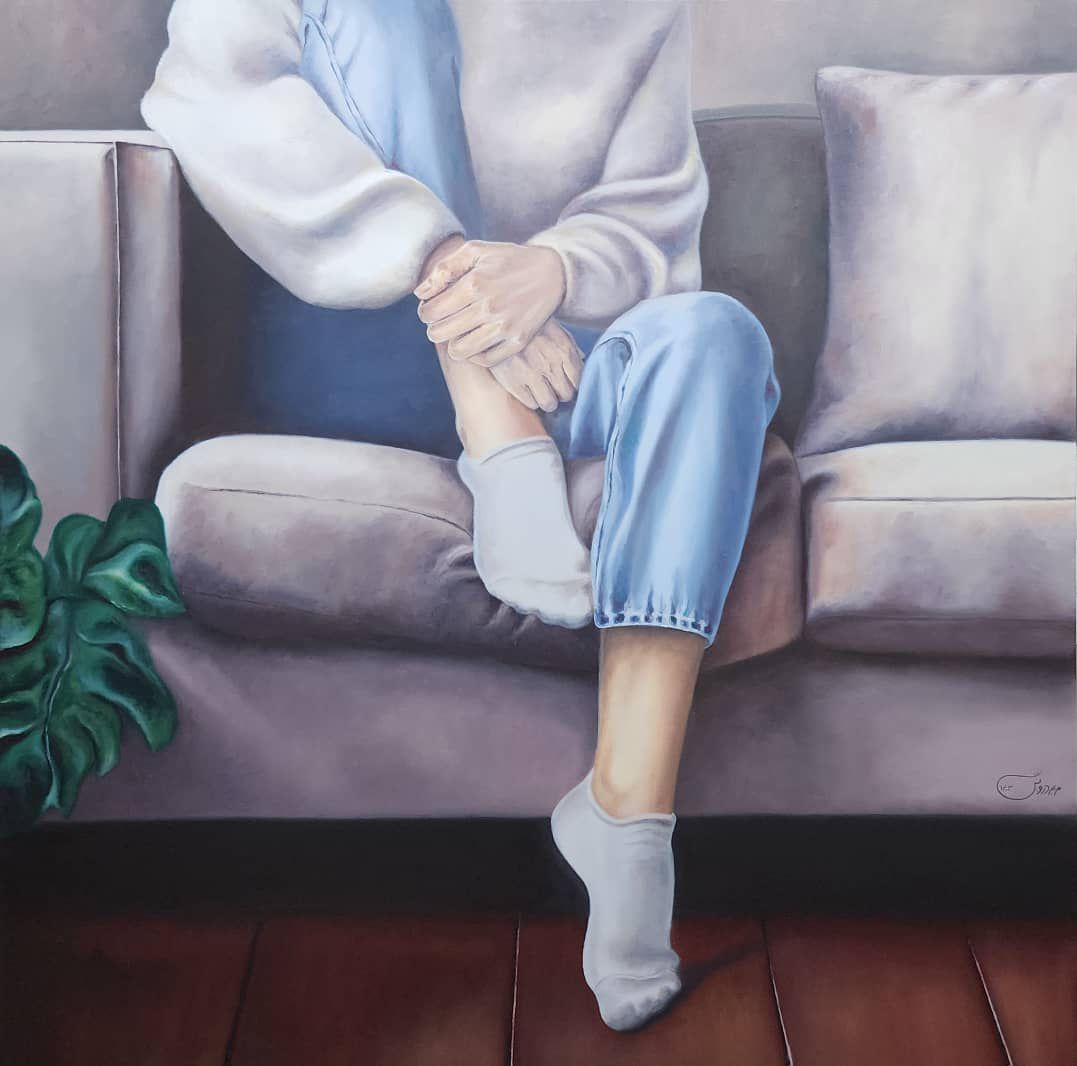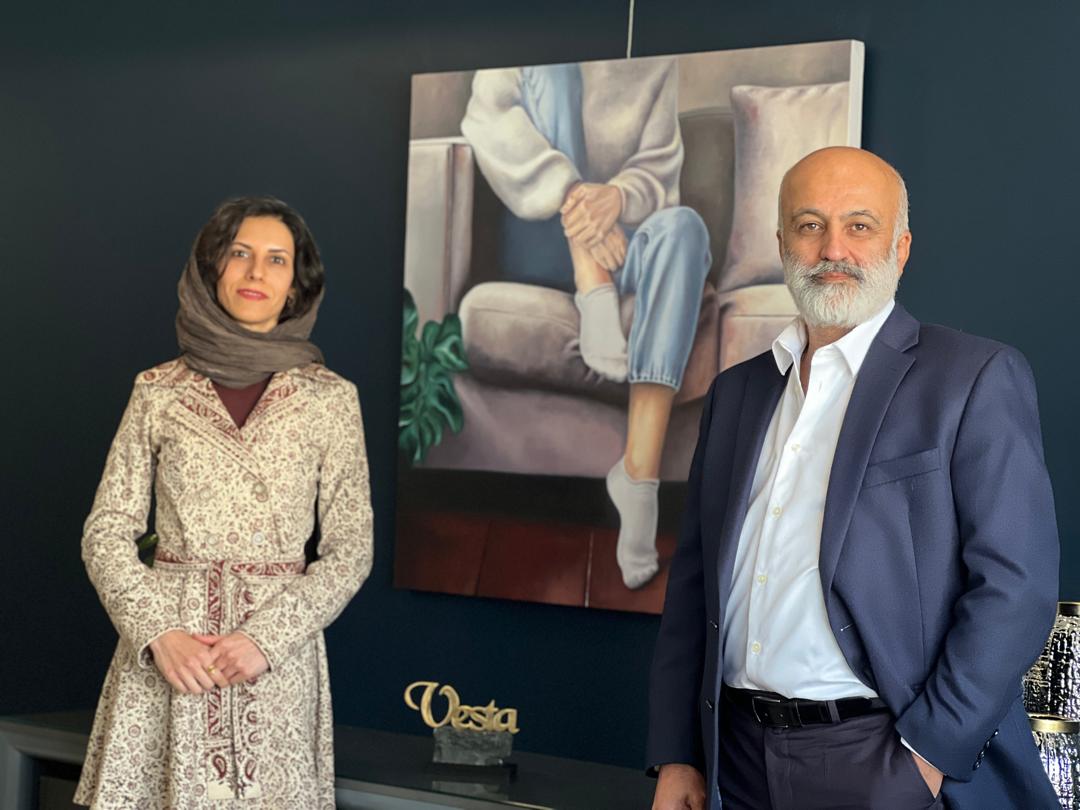
Maryam Darvish, “Women and Furnitures,” and Vesta Color
The goal of a collaborative effort between Vesta Color and Mojdeh Art Gallery is to foster artistic abilities and create a fresh artistic environment that advances the field of art. One of the project participants, Maryam Darvish , is a young artist who used a variety of Vesta Color products to produce a piece that she then presented to the brand. For this piece, she employed a variety of Vesta Color materials.
ArtDayMe : Vesta Color and Mojdeh Art Gallery's combined endeavor aims to foster artistic abilities and offer a fresh creative setting that encourages the growth of art.
This project features Maryam Darvish, a young painter whose female-themed works have garnered interest at Golestan and Vali galleries. She is well-known in Iran's visual world as the editor of the Visual Desk of Honaronline News Agency for many years.
She has offered her work to Vesta Color, which she developed using a variety of company materials. This piece, which is part of the “Women and Furnitures” collection, was made by assembling Vesta items onto a 100 by 80 centimeter canvas.

_Could you give a quick overview of your artistic training?
Maryam Darvish : In art school, I decided to take a graphic arts course, and I proceeded in this discipline at university. After that, I pursued painting further and earned my degree from Tehran's Alzahra University. In recent years, I have participated in a number of group shows, including those organized by the Association of Iranian Painters (AIP) and Haft Negah, and I have had three solo exhibitions.
_Would you mind expanding on your exhibitions?
Maryam Darvish : At Vali Gallery, I displayed a series of figurative works with a female subject called “Women and Furnitures.” Women were shown in the paintings at a particular time in their lives, when they were not engaged in any particular type of labor. In these pieces, moments were selected from among the busyness of a woman's life to symbolize periods of leisure and rest, hesitancy before making a choice, contemplation of an occasion, or even delight while one is idle.
I once more used women as the subjects of my works in a series called “Men's jobs,” but this time I removed them from their private and intimate surroundings and gave them a social role. Iran's artistic scene includes female singers and musicians, who have had some success performing in public but still face numerous obstacles. Girls who went through their childhood and youth practicing music and developing the abilities required to perform on professional venues are occasionally removed from the stage or a concert is canceled due to the inclusion of a female musician in the ensemble.
Although there is no law that forbids them from appearing on stage, these limitations nevertheless exist. In the era of information sharing, an unspoken rule has excluded women from performing music and made it a male-only profession comparable to mining, shipping, and judging.

_ How would you describe the artwork you developed for Vesta Color?
Maryam Darvish : This piece is an extension of the series “Women and Furnitures.” A woman is seated on a sofa, but the spectator can't see her face because only a portion of her torso is visible. It is impossible to determine the woman's actual feelings in this painting because most people can only infer a person's emotions from their face. Based on their perception of the figure, the colors, and the painting's general mood, the viewer is actually left to speculate as to what condition this individual is in.
A person's gaze, lips, and eyes all have shapes that contribute to their identity. Two persons appear alike because of these commonalities. However, the absence of a face in this image has made it impossible for the viewer to recognize any faces. This woman could be of any age, religion, or race, living anywhere in the world.
The observer might interpret the scene in a variety of ways because of the space's simplicity and the woman's lack of movement. This piece goes beyond the collection's original concept to address the current situation and a range of feelings that many of us are experiencing.
_ How long have you been aware of the products offered by Vesta Color?
Maryam Darvish : Vesta Color products were first made available to me in the early 2000s, and I made extensive use of them while I was a student. After then, there were a couple years of not using these goods. After painting with Vesta materials once more for this project, I came to the conclusion that they are of excellent quality, adapt to the times, and provide items that completely satisfy the needs of artists.
_ For other artists, which Vesta Color product would you recommend?
Maryam Darvish : Vesta oil paints, Liquin and other mediums are excellent and useful.

_ How do you feel about Vesta Color and Mojdeh Art Gallery's collaborative project?
Maryam Darvish : The decision of an art tool manufacturer to establish closer ties with the customers of its products is a truly fortunate occurrence. In reality, artists are never familiar with the history of the materials they use, but this event introduced them to the Vesta Color spectrum and helped them feel more connected. In this sense, the creator of the art tools and the person who utilizes them form a family.

LEAVE A RELPY